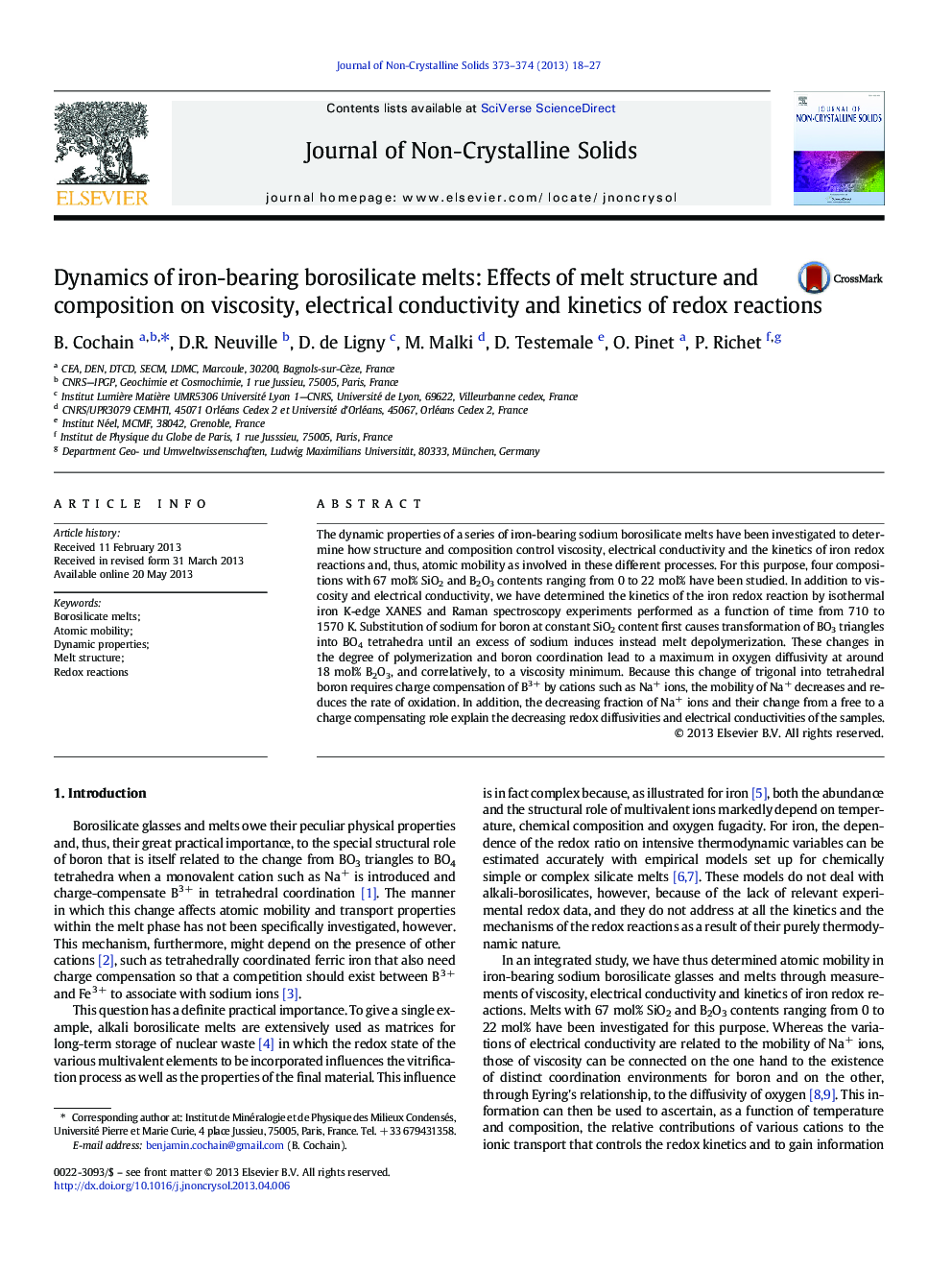| کد مقاله | کد نشریه | سال انتشار | مقاله انگلیسی | نسخه تمام متن |
|---|---|---|---|---|
| 1481288 | 1510464 | 2013 | 10 صفحه PDF | دانلود رایگان |

• Effect of structure and chemical composition on borosilicate melts properties
• Association of network-modifier cation with trivalent network-forming cations
• Change of boron coordination affects atomic mobility and transport properties.
• Importance of charge-compensating ions in the dynamics of borosilicate melts
• Dependence of iron redox ratio on intensive thermodynamic variables
The dynamic properties of a series of iron-bearing sodium borosilicate melts have been investigated to determine how structure and composition control viscosity, electrical conductivity and the kinetics of iron redox reactions and, thus, atomic mobility as involved in these different processes. For this purpose, four compositions with 67 mol% SiO2 and B2O3 contents ranging from 0 to 22 mol% have been studied. In addition to viscosity and electrical conductivity, we have determined the kinetics of the iron redox reaction by isothermal iron K-edge XANES and Raman spectroscopy experiments performed as a function of time from 710 to 1570 K. Substitution of sodium for boron at constant SiO2 content first causes transformation of BO3 triangles into BO4 tetrahedra until an excess of sodium induces instead melt depolymerization. These changes in the degree of polymerization and boron coordination lead to a maximum in oxygen diffusivity at around 18 mol% B2O3, and correlatively, to a viscosity minimum. Because this change of trigonal into tetrahedral boron requires charge compensation of B3+ by cations such as Na+ ions, the mobility of Na+ decreases and reduces the rate of oxidation. In addition, the decreasing fraction of Na+ ions and their change from a free to a charge compensating role explain the decreasing redox diffusivities and electrical conductivities of the samples.
Journal: Journal of Non-Crystalline Solids - Volumes 373–374, 1 August 2013, Pages 18–27